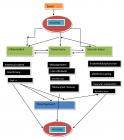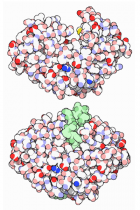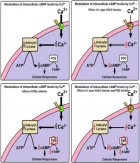Abstract
Research Article
The short and mid-term effects of Mulligan concept in patients with chronic mechanical neck pain
Konstantinos Zemadanis*
Published: 16 April, 2018 | Volume 2 - Issue 1 | Pages: 022-035
Background: Mechanical chronic neck pain is very common musculoskeletal dysfunction among people, manifesting one or more pain-induced movements and disability impairments. Clinical guidelines suggest passive cervical mobilization and thoracic manipulation as manual therapy interventions. Mulligan concept has positive effect in patients with lumbar and thoracic spine mechanical chronic pain. Study objective was to investigate possible clinical effects of Mulligan techniques in patients with cervical pain according to pain and disability status.
Methods: forty participants diagnosed with mechanical chronic cervical pain, randomly assigned into experimental and control group. NAG, SNAG and self-SNAG joint mobilization in a nine-sessions protocol implemented to the study group, while SHAM-Mulligan techniques applied to control group. Self-reported questionnaires Numeric Pain Rating scale (NPRT) and Neck Disability Index (NDI) were used for the measurement of pain and disability levels respectively. Possible Interactions among Factors (TIME X GROUP) and simple effects in three-time measurements of pre, post and one-month follow-up concerning NDI and NPRS variables, were detected with Mixed-ANOVA test.
Results: Baseline scores of pain and disability resulted in no differences between groups. A significant Group and Time factors interaction founded and simple main effects analysis showed that Mulligan concept-group had significant improvement in post-intervention NPRT and NDI scores (p<.001), compared to baseline scores. Follow-up also differed compared to post-treatment score (p<.001). SHAM-Mulligan control group had no significant differences in dependent variables at any level of TIME factor (p>.001). Significant differences were found between groups according to second and third measurement phase (p<.001).
Conclusion: Our findings suggest that Mulligan concept techniques improve symptoms of pain and disability in chronic mechanical neck pain patients in short and mid-term effect level.
Summary: Mobilization techniques of SNAGs, NAGS and self-SNAGs reduces pain and improve function in patients with mechanical neck pain. Taken into consideration the safety and simplicity of application, future studies are encourage to examine the underline mechanism of action.
Read Full Article HTML DOI: 10.29328/journal.jnpr.1001018 Cite this Article Read Full Article PDF
Keywords:
Mechanical neck pain; Chronic; Manipulation; Mobilization; Mulligan concept; SNAG; NAG; Self-SNAG
References
- Blanpied P, Gross A, Elliott J, Devaney L. Neck Pain: Revision 2017. J Orthop Sports Phys Ther. 2017; 47: 1-8.
- Genebra C, Maciel N, Bento T. Prevalence and factors associated with neck pain: a population-based study. Braz J Phys Ther. 2017; 21: 274-280. Ref.: https://goo.gl/Q48z59
- Binder A. Neck Pain. Clinical Evidence. 2008; 8: 108-113. Ref.: https://goo.gl/TrFRzs
- Carroll L, Cassidy J, Peloso P. Methods for the best evidence synthesis on neck pain and its associated disorders: the Bone and Joint Decade 2000-2010 Task Force on Neck Pain and Its Associated Disorders. Spine. 2008; 33: 33-38. Ref.: https://goo.gl/hSb2cf
- Hoy D, March L, Woolf A, Blyth F, Brooks P, et al. The global burden of neck pain: estimates from the global burden of disease 2010 study. Ann Rheum Dis. 2014; 73: 1309-1315. Ref.: https://goo.gl/vrpppo
- Cross KM, Kuenze C, Grindstaff TL, Hertel J. Thoracic spine thrust manipulation improves pain, range of motion, and self-reported function in patients with mechanical neck pain: a systematic review. J Orthop Sports Phys. 2011; 41: 633-642. Ref.: https://goo.gl/ErWkcG
- Bogduk N. The anatomy and pathophysiology of neck pain. Phys Med Rehabil Clin N Am. 2011; 22: 367-382. Ref.: https://goo.gl/jJBxyD
- Haldeman S, Carroll L, Cassidy JD. Findings from the Bone and Joint Decade 2000 to 2010 Task Force on Neck Pain and Its Associated Disorders. J Occup Environ Med. 2010; 52: 424-427. Ref.: https://goo.gl/nKfxHV
- Hurwitz E, Carragee E, van der Velde G, Carroll L. Treatment of neck pain: noninvasive interventions: results of the Bone and Joint Decade 2000-2010 Task Force on Neck Pain and Its Associated Disorders. Spine. 2009; 33: 123-152. Ref.: https://goo.gl/a1cx64
- Clair D, Edmondston S, Allison G. Physical therapy treatment dose for non-traumatic neck pain: a comparison between two patient groups. J Orthop Sports Phys Ther. 2006; 36: 867-875. Ref.: https://goo.gl/Qak6Hv
- Sarig-Baha H. Evidence for exercise therapy in mechanical neck disorders. Man Ther. 2003; 8: 10-20. Ref.: https://goo.gl/mbF5Wy
- Paksaichol A, Janwantanakul P, Purepong N, Pensri P, van der Beek AJ. Office workers’ risk factors for the development of non-specific neck pain: a systematic review of prospective cohort studies. Occup Environ Med. 2012; 69: 610-618. Ref.: https://goo.gl/LKfZgM
- Guzman J, Hurwitz EL, Carroll LJ, et al. A new conceptual model of neck pain: linking onset, course, and care: the Bone and Joint Decade 2000-2010 Task Force on Neck Pain and Its Associated Disorders. J Manipulative Physiol Ther. Spine 2008; 33: S14-23. Ref.: https://goo.gl/3QVQoz
- Fritz JM, Brennan GP. Preliminary examination of a proposed treatment-based classification system for patients receiving physical therapy interventions for neck pain. Phys Ther. 2007; 87: 513-524. Ref.: https://goo.gl/3QVQoz
- Kay T, Gross A, Goldsmith C. Exercises for mechanical neck disorders. 2012. Cochrane Database Syst Rev. 2005; 20: CD004250. Ref.: https://goo.gl/uq6H5H
- Vernon H, Humphreys K, Hagino C. Chronic mechanical neck pain in adults treated by manual therapy: a systematic review of change scores in randomized clinical trials. J Manipulative and Physiological Therapeutics. 2007; 30: 215-227. Ref.: https://goo.gl/2rwRDH
- Franke H, Franke J, Fryer G. Osteopathic manipulative treatment for chronic nonspecific neck pain: A systematic review and meta-analysis. International Journal of Osteopathic Medicine. 2015; 18: 255-267. Ref.: https://goo.gl/e15acB
- Mulligan BR. Manual Therapy ‘‘NAGS’’, ‘‘SNAGS’’, ‘‘MWMS’’ etc., 4th edition. Plane View Services Ltd., New Zealand: Wellington. 1999. 1-142.
- Exelby L. The locked lumbar facet joint: intervention using mobilizations with movement. Man Ther. 2001; 6: 116-121. Ref.: https://goo.gl/qrmmND
- Leaver A, Refshauge K, Maher C, Latimer J. Efficacy of manipulation for non-specific neck pain of recent onset: design of a randomised controlled trial. BMC Musculoskelet Disord. 2007; 8: 18. Ref.: https://goo.gl/qrmmND
- Griswold D, Learman K, O'Halloran B, Cleland J. A preliminary study comparing the use of cervical/upper thoracic mobilization and manipulation for individuals with mechanical neck pain. J Man Manip Ther. 2015; 23: 75-83. Ref.: https://goo.gl/2vJSFk
- Cleland J, Whitman J, Fritz J, Palmer J. Manual physical therapy, cervical traction, and strengthening exercises in patients with cervical radiculopathy: A case series. J Orthop Sports Phys Ther. 2005; 35: 802-811. Ref.: https://goo.gl/yh2wqx
- Kaltenborn F, Evjenth O, Kaltenborn T, Morgan D, Vollowitz E. Manual mobilization of the joints, vol. II: the spine. 2003. Ref.: https://goo.gl/mdzHaq
- Moulson A, Watson T. A preliminary investigation into the relationship between cervical snags and sympathetic nervous system activity in the upper limbs of an asymptomatic population. Man Ther. 2006; 11: 214-224. Ref.: https://goo.gl/65Pjuz
- Masaracchio M, Cleland J, Hellman M, Hagins M. Short-term combined effects of thoracic spine thrust manipulation and cervical spine nonthrust manipulation in individuals with mechanical neck pain: a randomized clinical trial. J Orthop Sports Phys Ther. 2013; 43: 118-27. Ref.: https://goo.gl/z8Cv9G
- Leaver A, Maher C, Herbert R, Latimer J, Mc Auley JH, et al. A randomized controlled trial comparing manipulation with mobilization for recent onset neck pain. Arch Phys Med Rehabil. 2010; 91: 1313-1318. Ref.: https://goo.gl/v3KEXJ
- Slaven E, Goode A, Coronado R. The relative effectiveness of segment specific level and non-specific level spinal joint mobilization on pain and range of motion: results of a systematic review and meta-analysis. J Man Manip Ther. 2013; 21: 7-17. Ref.: https://goo.gl/1ywxiH
- Vernon H. The Neck Disability Index: state-of-the-art, 1991-2008. J Manipulative Physiol Ther. 2008; 31: 491-502. Ref.: https://goo.gl/EcGoML
- Stratford P, Riddle D, Binkley J. Using the neck disability index to make decisions concerning individual patients. Physiotherapy Canada. 1999; 51: 107-112.
- Jensen M, McFarland C. Increasing the reliability and validity of pain intensity measurement in chronic pain patients. Pain. 1993; 55: 195-203. Ref.: https://goo.gl/Eg2dU9
- Childs J, Flynn T, Fritz J, Piva S, Whitman J, et al. Screening for vertebrobasilar insufficiency in patients with neck pain: manual therapy decision-making in the presence of uncertainty. J Orthop Sports Phys Ther 2005; 35: 300-306. https://goo.gl/BBsg5j
- Cleland J, Childs J, Whitman J. Psychometric properties of the Neck Disability Index and Numeric Pain Rating Scale in patients with mechanical neck pain. Arch Phys Med Rehabil. 2008; 89: 69-74. Ref.: https://goo.gl/bojyi9
- Young S, Aprill C, Braswell J, Ogard W. Psychological factors and domains of neck pain disability. Pain Med. 2009; 10: 310-318. Ref.: https://goo.gl/gZt5W4
- Pool J, Ostelo R, Hoving J, Bouter L. Minimal clinically important change of the Neck Disability Index and the Numerical Rating Scale for patients with neck pain. Spine. 2007; 32: 3047-3051. Ref.: https://goo.gl/ubie8b
- Farrar J, Young J, La Moreaux L. Clinical importance of changes in chronic pain intensity measured on an 11-point numerical pain rating scale. Pain. 2001; 94: 149-158. Ref.: https://goo.gl/td1r62
- Nyberg R, Smith R. The science of spinal motion palpation: a review and update with implications for assessment and intervention. J Man Manip Ther. 2013; 21: 160-167. Ref.: https://goo.gl/RgcbFC
- Huijbregts P. Spinal motion palpation: a review of reliability studies. J Man Manip Ther. 2002; 10: 24-29. Ref.: https://goo.gl/wdb585
- Lakhani E, Nook B, Haas M, Docrat A. Motion palpation used as a post manipulation assessment tool for monitoring end-feel improvement: a randomized controlled trial of test responsiveness. J Manipulative Physiol Ther. 2009; 32: 549-555. Ref.: https://goo.gl/W1yTFC
- Desai N, Khatri S, Keerthi R. Are self-SNAGS effective for chronic neck pain?REVISTA ROMÂNĂ DE KINETOTERAPIE. 2012; 18: 22-29.
- Said S, Ali O, Elazm. Mulligan self-mobilization versus Mulligan SNAG on cervical position sense. Int J Physiother. 2017; 4: 93-100. Ref.: https://goo.gl/fXfPgK
- Tsakitzidis G, Dankaerts W, Van Royen P. Non-specific neck pain and evidence-based practice. Eur Scientific J. 2013; 9: 1-19.
- Gross AR, Hoving JL, Haines TA, Goldsmith CH, Kay T, et al. A Cochrane review of manipulation and mobilization for mechanical neck disorders. Spine. 2004; 29: 1541-1548. Ref.: https://goo.gl/DL7BDg
- Sarigiovannis P, Hollins B. Effectiveness of manual therapy in the treatment of non-specific neck pain: a review. Physical Therapy Reviews 2005; 10: 35-50. Ref.: https://goo.gl/Fo7qJJ
- Gemmell H, Miller P. Comparative effectiveness of manipulation, mobilisation and the Activator instrument in treatment of non-specific neck pain: a systematic review. Chiropr Osteopat. 2006; 14: 7. Ref.: https://goo.gl/SGcvrL
- Cleland J, Flynn T, Childs J. The Audible Pop from Thoracic Spine Thrust Manipulation and Its Relation to Short-Term Outcomes in Patients with Neck Pain. J Manual Manipulative Therapy. 2007; 15: 143-154. Ref.: https://goo.gl/WpLdMa
- Hing W, Bigelow R, Bremner T. Mulligan's Mobilization with Movement: A Systematic Review J Manual Manipulative Therapy. 2009; 17: 39-66. Ref.: https://goo.gl/NhGK3i
- Abdelhay M, Elgendy M, Lasheen Y. Mulligan versus Maitland mobilization on thoracic kyphotic angle in postural kyphosis. Int J Physiother. 2017; 4: 168-172. Ref.: https://goo.gl/1qua28
- Zemadanis K, Sykaras E, Athanasopoulos S, Mandalidis D. Mobilization-with-movement prior to exercise provides early pain and functionality improvements in patients with patellofemoral pain syndrome. J lnt Musculoskeletal Med. 2015; 37: 101-107. Ref.: https://goo.gl/ykXQHi
- Snodgrass S, Heneghan N, Tsao H, Stanwell P. Recognising neuroplasticity in musculoskeletal rehabilitation: a basis for greater collaboration between musculoskeletal and neurological physiotherapists. Man Ther. 2014; 19: 614-617. Ref.: https://goo.gl/cJgqHk
- Lopez L, Perez J, Gutierez J. Mobilization versus manipulations versus sustain apophyseal natural glide techniques and interaction with psychological factors for patients with chronic neck pain: randomized controlled trial. Eur J Phys Rehabil Med. 2015; 51: 121-32. Ref.: https://goo.gl/KoPSqK
- Put M, Huber J, Pieniążek M. Randomized Clinical Trial of Multimodal Therapy and Mulligan’s Concept of Manual Therapy for Patients with Chronic Pain Syndrome Caused by Upper Cervical Spine Disorders. Int J Orthop Rehabil. 2016; 3: 40-46.
- Leon-Sanchez A, Cuetter A, Ferrer G. Cervical spine manipulation: an alternative medical procedure with potentially fatal complications. South Med J. 2007; 100: 201-213. Ref.: https://goo.gl/YXwGDZ
- Puentedura E, Cleland J, Landers M, Mintken P. Development of a clinical prediction rule to identify patients with neck pain likely to benefit from thrust joint manipulation to the cervical spine. J Orthop Sports Phys Ther. 2012; 42: 577-592. Ref.: https://goo.gl/rcXakV
- Mulligan BR. Manual Therapy NAGS SNAGS MWMS etc. Wellington, New Zealand: Plane View Services; 2004.
- Wilson E. The Mulligan Concept: NAGS, SNAGS, and mobilisations with movement. J Bodywork Movement Therapies. 2001; 5: 81-8.
- Hall T, Chan H, Christensen L. Efficacy of a C1-C2 Self-sustained Natural Apophyseal Glide (SNAG) in the Management of Cervicogenic Headache. J Orthop Sports Phys Ther. 2007; 37: 100-107. Ref.: https://goo.gl/dM81cU
- Eui-Ju Shin, Byoung-Hee Lee. The effect of sustained natural apophyseal glides on headache, duration and cervical function in women with cervicogenic headache. J Exercise Rehabilitation. 2014; 10: 131-135. Ref.: https://goo.gl/JFyJjc
- Ali A, Shakil-ur-Rehman S, Sibtain F. The efficacy of Sustained Natural Apophyseal Glides with and without Isometric Exercise Training in Non-specific Neck Pain. Pak J Med Sci. 2014; 30: 872-874. Ref.: https://goo.gl/dLNJ68
- Hussain H, Ahmad A, Amjad F. Effectiveness of Natural Apophyseal Glides Versus Grade I and II Maitland Mobilization in Non-Specific Neck Pain. Annals. 2016; 22: 1-7. Ref.: https://goo.gl/8Y8sNp
- Gautam R, Dhamija J, Puri A. Comparison of Maitland and Mulligan mobilization in improving neck pain, ROM and disability. Int J Physiother Res. 2014; 2: 482-487. Ref.: https://goo.gl/oWDGd8
- Ahmad R, Asim H, Nasir R. Comparison of Mulligan manual therapy techniques with Kaltenborn manual therapy techniques in patients with nonspecific neck pain in improvement on neck disability index. Int J Sci Res. 2015; 4: 1-4.
- Ganesh S, Mohanty P, Pattnaik M. Effectiveness of mobilization therapy and exercises in mechanical neck pain. Physiother Theory Pract. 2015; 31: 99-106. Ref.: https://goo.gl/mbyYbn
- Abdelgalil Allam Abdelgalil, Alaa Abdelhakeim Balbaa, Hatem Mohamed Elazizi, Ashraf Abdelaal Mohamed Abdelaal. High Velocity Low Amplitude Manipulation versus Sustained Apophyseal Glides on Pain and Range of Motion in Patients with Mechanical Neck Pain: An Immediate Effect. Int J Adv Res. 2015; 3: 503-513. Ref.: https://goo.gl/U4dRQN
- El-Sodany AM, Alayat MSM, Zafer AMI. Sustained natural apophyseal glides mobilization versus manipulation in the treatment of cervical spine disorders: a randomized controlled trial. Int J Adv. 2014; 2: 274-280. Ref.: https://goo.gl/5nXnuu
- Vicenzino B, Paungmali A, Teys P. Mulligan's mobilization-with-movement, positional faults and pain relief: current concepts from a critical review of literature. Man Ther. 2007; 12: 98-108. Ref.: https://goo.gl/cDdpqr
- Hearn A, Rivett DA. Cervical SNAGs: a biomechanical analysis. Man Ther. 2002; 7: 71-79. Ref.: https://goo.gl/imQF8R
- Bialosky J, Bishop M, Robinson M. The Mechanisms of Manual Therapy in the Treatment of Musculoskeletal Pain: A Comprehensive Model. Man Ther. 2009; 14: 531-538. Ref.: https://goo.gl/C2wMYN
- Paungmali A, O’Leary S, Souvlis T, Vicenzino B. Hypoalgesic and Sympathoexcitatory Effects of Mobilization with Movement for Lateral Epicondylalgia. Phy Ther. 2003; 83: 374-383. Ref.: https://goo.gl/MRKB5E
- Tachii R, Sen S, Arfath U. Short-term effect of sustained natural apophyseal glides on cervical joint position sense, pain and neck disability in patients with chronic neck pain. Int J Therap Rehabilitation Res. 2015; 4: 244-249. Ref.: https://goo.gl/HWQRS1
- EL-Sayed W, Mohamed A, Abdel-Monem G. Effect of SNAGS Mulligan Technique on Chronic Cervical Radiculopathy: A Randomized Clinical Trial. Med J Cairo. 2017; 85: 787-793. Ref.: https://goo.gl/1mxY1f
- Carroll L, Hogg-Johnson S, van der Velde G. Course and prognostic factors for neck pain in the general population: results of the Bone and Joint Decade 2000-2010 Task Force on Neck Pain and Its Associated Disorders. Spine. 2008; 33: 75-82. Ref.: https://goo.gl/4qifYQ
- Chiu T, Leung A. Neck pain in Hong Kong: a telephone survey on prevalence, consequences, and risk groups. Spine. 2006; 31: 540-544. Ref.: https://goo.gl/kRvRQk
- Goode AP, Freburger J, Carey T. Prevalence, practice patterns, and evidence for chronic neck pain. Arthritis Care Res (Hoboken). 2010; 62: 1594-1601. Ref.: https://goo.gl/JuEu5H
- Hoving J, de Vet H, Twisk J, Deville W, van der Windt D, et al. Prognostic factors for neck pain in general practice. Pain. 2004; 110: 639-645. Ref.: https://goo.gl/xqqvjP
- Kääriä S, Laaksonen M, Rahkonen O, Lahelma E, Leino-Arjas P. Risk factors of chronic neck pain: a prospective study among middle-aged employees. Eur J Pain. 2012; 16: 911-920. Ref.: https://goo.gl/H9n5Kh
- MacDermid JC, Walton DM, Côté P, Santaguida PL, Gross A, et al. Use of outcome measures in managing neck pain: an international multidisciplinary survey. Open Orthop J. 2013; 7: 506-520. Ref.: https://goo.gl/yp8JzP
- Pérez H, Perez J, f, Martinez A. Is one better than another? A randomized clinical trial of manual therapy for patients with chronic neck pain. Manual Therapy. 2014; 19: 215-221. Ref.: https://goo.gl/NQ3sDg
- Reid SA, Rivett DA, Katekar MG, Callister R. Sustained natural apophyseal glides (SNAGs) are an effective treatment for cervicogenic dizziness. Manual Therapy. 2008; 13: 357-366. Ref.: https://goo.gl/4yQsu2
- Thomas L, Rivett DA, Attia J, Parsons M, Levi C. Risk factors and clinical features of craniocervical arterial dissection. Man Ther. 2011; 16: 351-356. Ref.: https://goo.gl/jRNf2f
Figures:

Figure 1
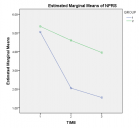
Figure 2
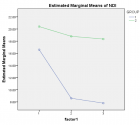
Figure 3
Similar Articles
-
Pulsed Shortwave Diathermy and Joint Mobilizations Restore a Twice Fractured Elbow with Metal Implants to Full Range of MotionDavid O. Draper*,Emily Veazey. Pulsed Shortwave Diathermy and Joint Mobilizations Restore a Twice Fractured Elbow with Metal Implants to Full Range of Motion. . 2017 doi: 10.29328/journal.jnpr.1001003; 1: 020-026
-
Achilles Tendon Injuries: Comparison of Different Conservative and Surgical Treatment and RehabilitationAlessandro Bistolfi,Jessica Zanovello, Elisa Lioce,Lorenzo Morino,Raul Cerlon,Alessandro Aprato*,Giuseppe Massazza. Achilles Tendon Injuries: Comparison of Different Conservative and Surgical Treatment and Rehabilitation. . 2017 doi: 10.29328/journal.jnpr.1001006; 1: 039-053
-
Comparison of Lung Function of normal and persons with chronic low back pain and its relation with duration and severity of Chronic Low Back PainAmit Baruaa,Monalisa Pattnaik,Patitapaban Mohanty*. Comparison of Lung Function of normal and persons with chronic low back pain and its relation with duration and severity of Chronic Low Back Pain. . 2017 doi: 10.29328/journal.jnpr.1001015; 1: 137-143
-
Frequency specific microcurrent resolves chronic pain and adhesions after ulnar transposition surgeryJodie Adams*,Carolyn McMakin. Frequency specific microcurrent resolves chronic pain and adhesions after ulnar transposition surgery. . 2017 doi: 10.29328/journal.jnpr.1001012; 1: 099-103
-
The short and mid-term effects of Mulligan concept in patients with chronic mechanical neck painKonstantinos Zemadanis*. The short and mid-term effects of Mulligan concept in patients with chronic mechanical neck pain. . 2018 doi: 10.29328/journal.jnpr.1001018; 2: 022-035
-
Assessment and treatment of patients with kinesiophobia: A Delphi consensusMattias Santi*,Ina Diener,Rob Oostendorp. Assessment and treatment of patients with kinesiophobia: A Delphi consensus. . 2022 doi: 10.29328/journal.jnpr.1001047; 6: 023-028
-
Effect of Lower Extremity Training in Diabetic Peripheral NeuropathyAnn Reena Rajan*. Effect of Lower Extremity Training in Diabetic Peripheral Neuropathy. . 2024 doi: 10.29328/journal.jnpr.1001056; 8: 001-004
-
Management of Non-contact Injuries, Nonspecific Chronic Pain, and Prevention via Sensory Conflicts Detection: Vertical Heterophoria as a Landmark IndicatorEric Matheron*. Management of Non-contact Injuries, Nonspecific Chronic Pain, and Prevention via Sensory Conflicts Detection: Vertical Heterophoria as a Landmark Indicator. . 2024 doi: 10.29328/journal.jnpr.1001057; 8: 005-013
-
Remote Effect of Fascial Manipulation on Knee Pain: A Case ReportAsifuzzaman Shahriyar Ahmed*, Deepak Kumar Pradhan. Remote Effect of Fascial Manipulation on Knee Pain: A Case Report. . 2024 doi: 10.29328/journal.jnpr.1001059; 8: 017-021
-
From Adversity to Agency: Storytelling as a Tool for Building Children’s ResilienceKate Markland*. From Adversity to Agency: Storytelling as a Tool for Building Children’s Resilience. . 2024 doi: 10.29328/journal.jnpr.1001062; 8: 039-042
Recently Viewed
-
Agriculture High-Quality Development and NutritionZhongsheng Guo*. Agriculture High-Quality Development and Nutrition. Arch Food Nutr Sci. 2024: doi: 10.29328/journal.afns.1001060; 8: 038-040
-
A Low-cost High-throughput Targeted Sequencing for the Accurate Detection of Respiratory Tract PathogenChangyan Ju, Chengbosen Zhou, Zhezhi Deng, Jingwei Gao, Weizhao Jiang, Hanbing Zeng, Haiwei Huang, Yongxiang Duan, David X Deng*. A Low-cost High-throughput Targeted Sequencing for the Accurate Detection of Respiratory Tract Pathogen. Int J Clin Virol. 2024: doi: 10.29328/journal.ijcv.1001056; 8: 001-007
-
A Comparative Study of Metoprolol and Amlodipine on Mortality, Disability and Complication in Acute StrokeJayantee Kalita*,Dhiraj Kumar,Nagendra B Gutti,Sandeep K Gupta,Anadi Mishra,Vivek Singh. A Comparative Study of Metoprolol and Amlodipine on Mortality, Disability and Complication in Acute Stroke. J Neurosci Neurol Disord. 2025: doi: 10.29328/journal.jnnd.1001108; 9: 039-045
-
Development of qualitative GC MS method for simultaneous identification of PM-CCM a modified illicit drugs preparation and its modern-day application in drug-facilitated crimesBhagat Singh*,Satish R Nailkar,Chetansen A Bhadkambekar,Suneel Prajapati,Sukhminder Kaur. Development of qualitative GC MS method for simultaneous identification of PM-CCM a modified illicit drugs preparation and its modern-day application in drug-facilitated crimes. J Forensic Sci Res. 2023: doi: 10.29328/journal.jfsr.1001043; 7: 004-010
-
A Gateway to Metal Resistance: Bacterial Response to Heavy Metal Toxicity in the Biological EnvironmentLoai Aljerf*,Nuha AlMasri. A Gateway to Metal Resistance: Bacterial Response to Heavy Metal Toxicity in the Biological Environment. Ann Adv Chem. 2018: doi: 10.29328/journal.aac.1001012; 2: 032-044
Most Viewed
-
Evaluation of Biostimulants Based on Recovered Protein Hydrolysates from Animal By-products as Plant Growth EnhancersH Pérez-Aguilar*, M Lacruz-Asaro, F Arán-Ais. Evaluation of Biostimulants Based on Recovered Protein Hydrolysates from Animal By-products as Plant Growth Enhancers. J Plant Sci Phytopathol. 2023 doi: 10.29328/journal.jpsp.1001104; 7: 042-047
-
Sinonasal Myxoma Extending into the Orbit in a 4-Year Old: A Case PresentationJulian A Purrinos*, Ramzi Younis. Sinonasal Myxoma Extending into the Orbit in a 4-Year Old: A Case Presentation. Arch Case Rep. 2024 doi: 10.29328/journal.acr.1001099; 8: 075-077
-
Feasibility study of magnetic sensing for detecting single-neuron action potentialsDenis Tonini,Kai Wu,Renata Saha,Jian-Ping Wang*. Feasibility study of magnetic sensing for detecting single-neuron action potentials. Ann Biomed Sci Eng. 2022 doi: 10.29328/journal.abse.1001018; 6: 019-029
-
Pediatric Dysgerminoma: Unveiling a Rare Ovarian TumorFaten Limaiem*, Khalil Saffar, Ahmed Halouani. Pediatric Dysgerminoma: Unveiling a Rare Ovarian Tumor. Arch Case Rep. 2024 doi: 10.29328/journal.acr.1001087; 8: 010-013
-
Physical activity can change the physiological and psychological circumstances during COVID-19 pandemic: A narrative reviewKhashayar Maroufi*. Physical activity can change the physiological and psychological circumstances during COVID-19 pandemic: A narrative review. J Sports Med Ther. 2021 doi: 10.29328/journal.jsmt.1001051; 6: 001-007

HSPI: We're glad you're here. Please click "create a new Query" if you are a new visitor to our website and need further information from us.
If you are already a member of our network and need to keep track of any developments regarding a question you have already submitted, click "take me to my Query."






